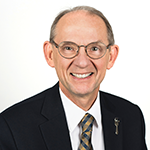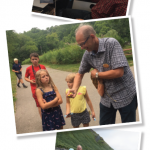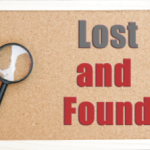Rheumatologists who are outstanding clinicians, provide consistently exceptional care to patients and serve as role models for colleagues and trainees are in the spotlight in our Lessons from a Master Clinician series. Here, we offer insights from clinicians who have achieved a level of distinction in the field of rheumatology.

Dr. Matteson
Eric L. Matteson, MD, MPH, is professor of medicine and chair emeritus of the Division of Rheumatology in the Department of Internal Medicine at the Mayo Clinic. Dr. Matteson’s clinical and research interests are in the fields of vasculitis and inflammatory arthritis. His research agenda includes investigation into the epidemiology of these diseases and their clinical disease expression and impact on patients who have them, biomarkers of disease susceptibility and disease activity, and clinical trials of novel agents. This work has resulted in more than 350 publications.
Dr. Matteson has served on the steering committee of the international study consortium investigating lung disease in the connective tissue diseases and has served as co-principal investigator for clinical and translational studies of polymyalgia rheumatica.
He is a past president of the Rheumatology Research Foundation, and he has authored or co-authored six books about the history of rheumatic disease and rheumatologists.
The Rheumatologist (TR): In your opinion, what makes for a master clinician?
ELM: This is something that is often asked, and there are many wonderful insights on this subject that ought to be shared. One response that I don’t hear much is perhaps something that I trained in myself, and I know others who I regard as master clinicians have done the same: from the time of my undergraduate studies through medical school, I found it extremely important to have a structure for my reading program. This included daily pensum (in the positive sense) of reading and reviewing specific medical topics and, also, dedicated time for reading on a nonmedical topic. For me, the latter was usually something of a historical nature or a classic work of literature.
TR: Who were some of your clinician role models, and what qualities did you admire in these individuals?
ELM: In my fellowship, William “Joe” McCune, MD, at the University of Michigan, Ann Arbor, was an important role model. Joe demonstrated the traits that I admire and that I sought to emulate: He was a great listener, thoughtful, considerate, very knowledgeable, energetic and sensitive, not only to the needs of patients, but also to those of learners. He was very tuned in to subtle discrimination and bias against women and minorities on our team, and he was effective in addressing it. That impressed me greatly and became important as I faced these same challenges in promoting the careers of our faculty. He had a great clinician’s eye for clinical knowledge gaps and how to address them, and he really got me, and many others, started in our clinical academic careers.
There is no substitute for seeing lots of patients & keeping up on reading in the field.
As someone interested in medical history, I have also looked to physicians like William Osler and Adolf Kussmaul as figures who were outstanding clinicians. Lessons from them, like lessons from my own role models in training and thereafter, are the importance of performing self-critique, having a willingness to reevaluate a difficult problem time and again, being able to openly admit mistakes and act upon them in a positive way that ultimately enhances patient care, and working to achieve excellence in teaching.
TR: For a fellow in training or junior rheumatologist, what are some habits that can be incorporated into daily practice to build on their skills as a clinician?
ELM: The question is a good one: I don’t know of any magical way to build skills other than to practice them. There is no substitute for seeing patients, and it is important to not shy away from seeing patients in large numbers over time. Most of what I have learned in medicine, and a lot of what I have learned in life even outside medicine, has been the result of my interactions with patients. I’ve already mentioned the habit of reading daily.
All of this is hard work, and it simply must be done to reap the rewards. Medicine isn’t an 8 to 5 job. It is a privilege and one that must be earned and deserves our hard work.
Another important feature of success is to develop a sound mentorship relationship—often more than one—and to work assiduously to develop a peer network for professional and personal support.
TR: What lessons have you learned from patients that have contributed to your own growth as a clinician?
ELM: One of the most important things that I have learned is personal awareness and resilience. Many of our patients suffer from chronic, complex diseases. I have had powerful experiences in both success and also in failures of care that have made me more empathetic and shown me how important it is to listen, guide, and also honor the personal agency of not only patients, but also learners at different levels, as well as of colleagues and friends.
I’ll never forget a young woman I met early in my career. She had a rare autoinflammatory disorder with recurrent macrophage activation syndrome. She had two small children, a husband deployed with the Army and wonderful patience. We figured out the diagnosis, and she initially, to our gratification, responded to treatment, but over a year-and-a-half she suffered multiple relapses and died. It was incredibly heart-breaking. Today, we might have been able to save her with some of our newer therapies. I feel that I got to know a wonderful person and family during her care and at her funeral. It was a real lesson about the importance of understanding disease and patients and humility.
TR: What skills, habits or experiences have you found most helpful in finding the right diagnosis in medical mystery cases that heretofore had been unsolved?
ELM: These mystery cases are what really interest and even delight us in rheumatology, and these cases may serve as professional and personal satisfiers in terms of intellectual stimulation and ability to make an impact. As I mentioned, there is no substitute for seeing lots of patients and keeping up on reading in the field. Only in this way can you learn the breadth and subtleties of disease and recognize unusual symptom complexes that can characterize these conditions.
Constantly going back to the patient to understand signs and symptoms, consulting the literature and your peers, and seeking advice from others are essential to cracking these cases, and sometimes even recognizing new disease entities. It is very thrilling to recognize a disease in a patient who has been sent to you after seeing many physicians and not receiving a diagnosis, but I must also say that I have often been just as thrilled when someone on our team comes up with the correct diagnosis. Sometimes you recognize the disease right from the history and exam at the first encounter but, more often, the diagnosis comes with carefully working through the disease features over some time.
TR: How do you approach the concept of uncertainty when entertaining a diagnosis for a patient?
ELM: If there is anything certain in medicine, it is uncertainty. Uncertainty is something that consciously, or sometimes unconsciously, should be taken into account by being as meticulous as possible in considering diagnostic possibilities and in developing treatment plans. It can have bad consequences in the form of over-diagnosis and overtreatment; in my experience; the latter is by far the most common and may lead to horrendous consequences. In our discipline of rheumatology, we become very humble by the variability of response to our treatments.
Uncertainty is inherent to the patient experience, too. For this reason, it is really important to focus on developing trust with patients and their families and to focus on shared decision making.

Jason Liebowitz, MD, completed his fellowship in rheumatology at Johns Hopkins University, Baltimore, where he also earned his medical degree. He is currently in practice with Skylands Medical Group, N.J.


